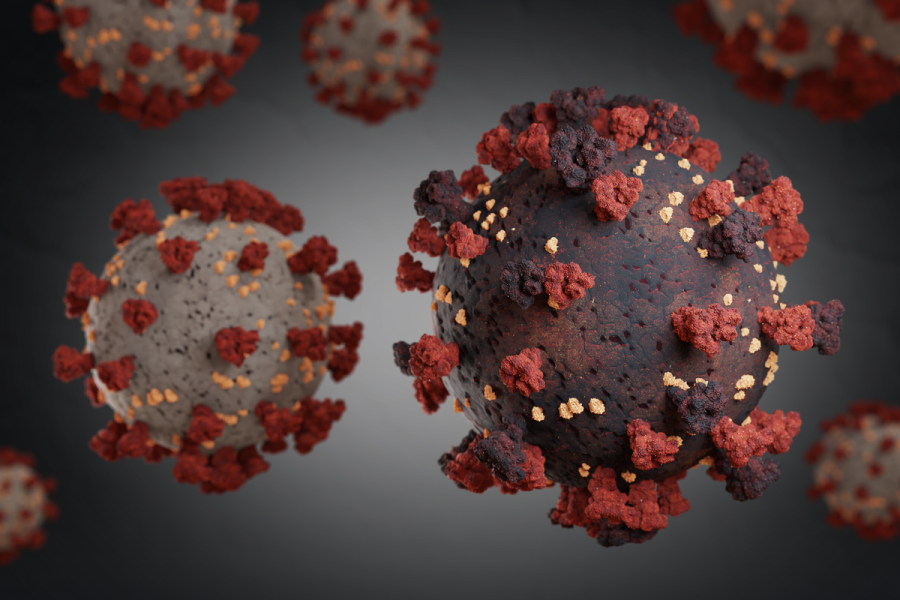Columns
Covid-19: tracking the realities
We now have more knowledge about the virus and the disease than we ever did before.
Sameer M Dixit
Nepal appears to have entered the second phase of the Covid-19 pandemic, with a new ‘wave’ currently underway. There is a slight debate as to whether this is the second or third wave, as Nepal experienced a peak of sorts early in June 2020 followed by a bigger peak in October the same year. The current wave appears to be moving quite fast, compared to the previous ones. For example, one month ago, the Positivity Rate (percent positive among tested persons) was less than 3 percent. It has now jumped to almost 10 percent. The scientific community is still not very sure as to why these waves occur. Some attribute this to genetic changes within the virus leading to variants, while others suggest behavioural changes leading to risk activities. Some others suggest that it is a combination of the two. There have been very few pandemics in the past, and those have also exhibited different waves over time. Viral infection appears to die out over time, only to resurface months later. Thus we should expect waves as natural occurrences during a Pandemic such as this one.
Variants are natural
The topic of interest to most people these days is regarding the variants of SARS-COV-2, the causative agent of Covid-19. Variants are naturally occurring genetically altered versions of a virus, with the majority of original genetic identity remaining unaffected. Coronaviruses, similar to Influenza and other viruses of the ‘RNA virus’ family regularly undergo genetic changes as part of their adaptations. Without the ability to form variants, viruses or even bacteria will cease to exist. Variants do not necessarily have to be more severe.
Sometimes variants can become weaker also, depending on the environment. There is still not enough data about the severity of various variants present in Nepal and worldwide. This includes at least three major SARS-COV-2 variants of UK, Brazil and South African origin. Further, an Indian variant was identified recently, while news coming in from the US and Japan also suggest that they have also identified unique variants. It is a well-accepted fact in the scientific community that there are many such variants across the globe, as yet undetected due to the unavailability of genetic mapping tools.
The government has recently suggested that the current wave of Covid-19 is largely due to the UK variant, ‘B.1.1.7’. As per data from National Public Health Laboratory, this variant is being observed in increasing numbers of infected persons in the community, suggesting community transmission of this strain among others. Whether or not B.1.1.7 is the only variant present in the Nepali population is an important question. However, in complete absence of a regular genome sequencing-based surveillance system in the country, it will be impossible to find evidence of this or any other variants in the community.
The method of real-time PCR testing using specialised kits, carried out by NPHL has indicated that B.1.1.7 is indeed increasing in Nepal. However, this is only a proxy indicator in the absence of genome sequencing. We need to have a baseline knowledge of different strains present in the Nepali population, and also understand their characteristics. While we worry about imported variants, we have failed to ask the question of whether there might be local variants already present in the Nepali population. This information is important as it can be used as evidence to make decisions on vaccines, diagnostics tests and overall policy on Covid-19 mitigation. Sequencing has already been carried out in Nepal from private-sector labs in 2020, and the infrastructure along with expertise already exists.
Covid-19 vaccines work
The issue with vaccines is of great interest to the entire population of the world, not just Nepal. We know that there are at least 12 vaccines in use, officially, in different countries, and all of them have been projected to be effective against the severity of Covid-19. In Nepal, two of those are now in use: Covishield, produced in India by the Serum Institute of India under the banner of pharmaceutical giant AstraZeneca, and SInopharm Wuhan vaccine (referred to as ‘Vero Cell’ by DDA/MoHP) developed by Wuhan Institute of Biological Products, China. Covishield uses a virus called Adenovirus to carry an important Coronavirus gene to trick the body into thinking it’s infected, while Vero Cell uses inactivated (unable to cause disease) SARS-COV-2 to do the exact same thing.
Both these vaccines have completed extensive human clinical Phase 3 trials and have reported no fatalities. In terms of efficacy, the former claims around 79-90 percent after two doses, while the latter claims around 72 percent. Just for reference, influenza vaccines used every year offer, at best, 50 percent protection. Thus, overall, it is clear that both Covid-19 vaccines work to varying degrees, and both are safe. Whether or not they are equally effective against known and unknown variants is not yet clear as studies are underway.
We have to be extremely careful when making judgements about vaccines based on what we read nationally and internationally. Vaccines are a major commodity now, and will be even more so as we move towards opening up countries and economies. In fact, vaccination is the only way we will come out of the Covid-19 pandemic, and as such, the demand will be high for the next few years. In this scenario, it would be only natural for pharmaceutical companies to secure their products in the global market.
There is going to be cut-throat competition for market leverage and we are already noticing indications of this. Downplaying each other’s vaccines on the safety and efficacy aspects by way of media and social media mobilisation is something we are now observing every day. This was seen in the case of the AstraZeneca / Oxford vaccine, the Sputnik(Russian) vaccine and also in the case of Sinovac and Sinopharm vaccines. We should understand that no vaccine is 100 percent efficient or completely safe, but the benefits of using those far outweigh the risks those pose to the human population. Vaccines will save the risk population against severe symptoms and even death, as compared to no vaccines. This is the ground reality, supported by scientific evidence.
We should not get too carried away with the global situation when it comes to understanding the current threat posed by Covid-19. Nepal made a series of mistakes last year, when we failed to understand the ground reality in our country and region—instead focusing too much on what was happening elsewhere. We have now come to realise that Covid-19 has population dynamics that can be country and region-specific. Further, major developments have arisen in the last year. We now have effective vaccines; many of us have recovered from the disease and are now naturally protected; we now know the importance of wearing masks in public to control spread of disease; our clinicians have a much better grasp on treating the disease.
We now have more knowledge about the virus and the disease than we ever did before. We should now focus our attention to obtaining vaccines with good clinical trial evidence to completely inoculate our population as quickly as possible. At the same time, we must ensure that masks are worn in public places without fail by everyone. Everything aside, these two simultaneous approaches will lead us out of this long pandemic. Let us do this by not spreading fear on a daily basis. Let us inform, not misinform.




 14.12°C Kathmandu
14.12°C Kathmandu













%20(1).jpg&w=300&height=200)

